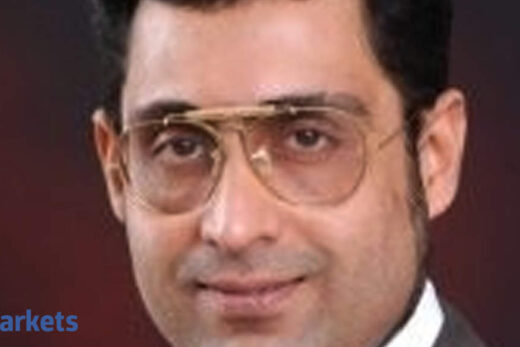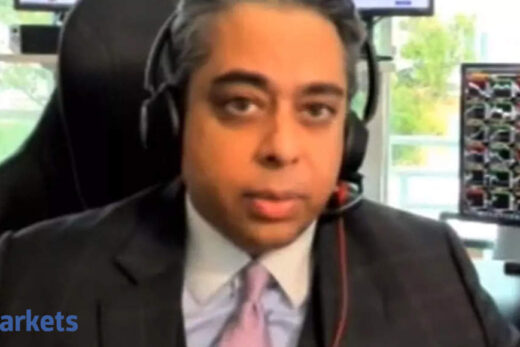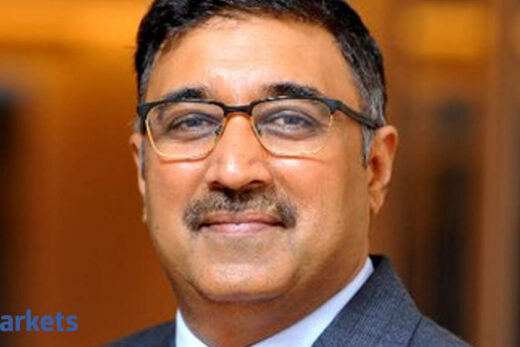The data demand indicators have started normalising. What is your sense, do you think the effect of the second wave is now behind us?
I would say that we are seeing a lot of momentum. I would not say that the entire effect is behind us, because there are certain segments of the economy still recovering. That will take some time.
But across many of our sectors we are seeing strong demand and that is auguring very well. Rural India again is leading the way. Our tractor business has seen remarkable growth across the industry. That is a good sign for us.
Your take on the semi conductor shortage and what it means for the auto sector?
The semi-conductor shortage is actually a global one. In fact, we have seen auto companies in western economies getting impacted a lot more. It has been driven more by global demand and supply and less due to the impact of the pandemic.
Overall, there have been some disruptions but they are getting back on track. We have had some disruptions with fuel injection in the past. We have corrected most of that. As we grow further over the next few months, we may see some disruption coming in, but we do not expect something significant at this point in time.
But the world has changed. We have to look at supply chains very differently than we did before. That is part of what we need to do over the next few months.
So, what is the real situation?
I would say that we are comfortable overall, but not to a point where we feel that the problem is behind us. We still see this impacting some potential numbers. At this point it is reasonably fine but with the new launches and with the growth that will come in, it may impact some numbers if we do not get adequate supplies.
We are working with the suppliers right now, and at this time we do not see any potential crisis. But we do not see ourselves completely out of the woods.
What could be the constraint? There are two scenarios — one is demand is back but you are not able to supply, and the other is that you are able to pre-empt the demand and you are keeping stocks ready…
We are keeping stocks ready, but we do expect a far greater ramp-up in demand especially as we come up with newer models. Therefore, right now we are working to ensure that our supply chain can meet that significant ramp-up.
The levels we are at today are comfortable.
Some insights into the tractor domain, given Covid’s impact on rural India this time?
We declared tractor results for June and we were up 30% year over year. Now, June last year was a very strong month. It was not really impacted by the pandemic while April was. May got back on track quickly and June was significant growth from the year prior.
So this has been a positive surprise. And we had not expected such a strong bounce back so quickly on the tractor front. We are, at this point, seeing very strong demand in rural areas.
What about your plans to invest in the EV space?
There are going to be multiple partnerships in EV. This is a space that is evolving fast. With regard to technology in EV, with regard to batteries, charging infrastructure there will be multiple partnerships.
At this point, we are working with various players globally. In addition to that, we are in the process of launching our top-of-the-range electric vehicle which is Battista. It is arguably going to be one of the best electric vehicles in the world. The technology that comes in there will be very helpful for us as well.
This space is going to see a lot of changes over the next two or three years. We would expect a fair amount of partnerships that will help us position ourselves better.
A lot of internet companies and platforms are unlocking value. Have you any similar plans?
We are looking at significant growth in many areas. We have identified 10 growth stems in which we have potential for a billion dollar market cap. In addition to that, we are looking at setting up new-age platforms where Mahindra will not take a majority stake, or may have a majority stake to start with but then go to being a minority one as the business grows.
We have had some examples already, such as FirstCry. Another one that is coming up fast is Porter. There will be more on that front as well. So we do see unlocking across multiple ways — one is through these new-age platforms, second is through IPOs, third could be potentially bringing in partners and unlocking some of the value.
Of the 10 growth stems that we’ve identified, three are listed — Lifespaces, Holidays and Logistics. We feel fairly good about being able to create that value for the investors.
The big change for the Mahindra Group has been that you have changed your capital allocation policy by getting rid of businesses which do not make sense. What is next now?
Next is driving growth while maintaining a ruthless fiscal discipline. We need to make sure that we meet our return targets. But at the same time we also got to grow in a significant way, so we have committed to an 18% ROE with a 15% to 20% growth.
Shareholders care about market cap, while CEOs say market cap is just a function of stock markets. So, what is the importance of market cap? Do you value market cap or stock market reaction?
Market cap is obviously important, because one of the key delivery aspects for us is to reward our investors. Our actions are focussed on what will drive market cap. At the same time, in the short run there are various factors that come into play. So we are not looking at market cap day to day, but we are looking at the key inputs that we need to put in place to be able to create a greater market cap.
Let’s talk about cash flow, return on equity and ROCE.
These are the three factors that really drive market cap. In cash flow, we have seen a very strong comeback. We generated over Rs 10,000 crore of cash last year. In terms of ROE, we have got all the heavy lifting behind us. We are on a very strong path to get to 18%.
As for how we will invest the cash flow, we are looking at ensuring that any investments we make have clear path to high returns. If not, we will return it to our investors.
From a tractor company, Mahindra & Mahindra has become a very large auto player. Some years from now, shall we see the company divided into three equal parts – tractors, passenger cars and electric?
I would also expect a number of our other growth steps to become significant. So it will likely be more than three parts.
So what could be that fourth or the fifth part?
As I said, some of our listed entities are doing very well and are seeing significant growth. You may or may not count them in the growth for M&M overall, but as I look at value creation for our investors, we see great potential in some of our unlisted entities. One of them Accelo which is into auto recycling and specialty steel. There are a number of other examples too.
A lot of corporates tell us that China blossomed between 2000 and 2010, India will do the same between 2020 and 2030. Do you think this is realistic?
I think we are very well positioned today. In the last 12 months we saw digitisation really doing good. Digital payments were up sharply, e-commerce was up 30%, making India the fastest growing e-commerce market in the world. Rural India has shown remarkable resilience. While private consumption was hit badly, we are seeing a bounce back on that front.
The corporate sector was actually very well positioned. Despite the pandemic, the surprise was that the net profit of 5,000 listed entities was Rs 5.5 lakh crore in F21, almost 2.5 times that in F20. This was the result of a sharp fall in input costs, but it means that companies have better balance sheets and are ready for investment. That positions us well for the future.
What do we see there? We see a GDP rebound that will likely be stronger than expected. Interest rates will remain low though there is some concern over inflation. Fiscal targets are unlikely to be breached. Tax collections have not declined as much in the second wave as in the first wave. There is a strong export surge. We are seeing a very strong global demand and a continuing strength in rural areas. Given all this, I think India is positioned well.
What do we need to do? The first thing is, speed up vaccination. The second thing is, position India well in the global supply chain. Companies globally are looking at changes of supply chain because of the disruptions. A strong push on infra will help us position India and can put us on a path to significant GDP increases over the next 10 years. So at this point in time I am optimistic, but there is a lot of work to be done.
What is your level of preparedness to tackle any possible third wave?
I would say very high. Having been through the first two waves and having come out strong from that perspective, we are ready for it. We hope it will not happen, but we have to be ready for it. The key is protecting both lives and livelihoods. What we have seen in the second wave is a very strong partnership between the government and industry to ensure that both are protected well.
Have operations normalised pretty much across India, across geographies?
Yes, operations have normalised across India, across geographies. We do see some supply chain issues that we talked about earlier, but beyond that we are pretty much back to normal, except for the fact that we still have work-from-home arrangements. That is something that we will continue to do till we are sure that the employees are safe coming back to office.
Which among your various businesses has seen good a comeback?
In the last month I would say tractor business. We have seen very strong demand in this business. Beyond that, I would say that we have seen that across hospitality. In real estate too we are starting to see good demand coming back.
And the sectors that have disappointed?
We are not disappointed with any of our industries at this point, because things have moved far better than what we had expected. We are today in a far better position than we would have expected going into either of those two waves.
What is the future of a business like Tech Mahindra?
I think work-from-home has been a big boom for that sector. It really changes the dynamics, it changes the potential cost base, the ability to deliver. Work from home will not go away at least for the tech sector because it is very easy to be able to exactly monitor the output, to work in teams closely. the collaboration tools today are far better. Therefore, we will see large aspects of that remaining as we go forward.
Can high commodity prices spoil the party?
That is just a reflection of global demand right now and of demand in India. So it will adjust and we just have to make sure that we are monitoring inflation closely and taking actions in advance.
But at this point in time, we are seeing a significant surge in commodities as well as freight rates. But I would look at it more as a function of demand, which I expect to stabilise over the next few months.
What of your investment strategy going forward?
The way we look at is scaling up our businesses. In many cases that will require investment in different geographies, but we are not starting with an investment in a particular geography for the sake of that geography. Rather, we are looking at how to scale up our core businesses and establish an even stronger market leadership, how to take our growth gems and get to a multiplication factor of growth there.
That is where we will be putting our investments. For us it is very important to maintain that fiscal discipline to ensure that the returns are there.
For this decade, which is one sector you would say is the sunrise sector, like IT was some time back?
India is very well positioned in multiple sectors. I am not going to pick one particular sector. The IT sector is seeing a positive wave in terms of the demand that we are seeing globally today for digitisation and cost cutting. We see a significant boom in the IT sector, with 5G contributing to it.
The pharma sector in India is positioned extremely well. We would look at the auto sector and electric vehicles too. Today in India we are making cars as good as the best in the world, in some cases even better. We are going to continue on that path.
We see multiple industries that can compete with all the big players globally in their markets as well. All of them might combine to make the next decade India’s.



